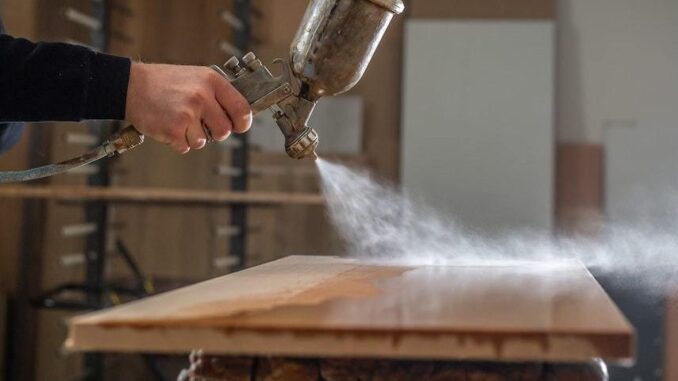
Spray painting wood is a highly effective way to revamp furniture, give a fresh look to outdoor decor, or even add personal flair to DIY projects. But before diving in, many people often ask: Can you spray paint wood? The short answer is a resounding yes, but there’s a lot more to consider than just picking up a can of spray paint. From preparation to finishing touches, spray painting wood can yield fantastic results when done the right way. Whether you’re a beginner or a seasoned DIYer, this guide will take you through the entire process — from determining if spray painting wood is a good idea to ensuring you achieve that flawless, professional finish.
The Appeal of Spray Painting Wood
Spray painting has become one of the most popular methods for painting wood, and for good reason. Not only is it fast and efficient, but it also gives wood surfaces a smooth, even finish without the hassle of brush marks. Whether you’re asking, Can wood be spray-painted? or Can you apply spray paint to wood? the answer is yes, and spray painting is an excellent choice for many projects.
For wood enthusiasts and DIYers, spray painting has major appeal due to the speed with which it covers large surfaces. Whether you’re refreshing a piece of furniture or applying a protective coat to outdoor woodwork, spray paint allows for quick and uniform coverage. The smooth, even texture achieved through spray paint application is often superior to the brush-and-roll method, especially when working on intricate or detailed wood surfaces.
Furthermore, spray painting wood provides access to an array of colors and finishes. If you’ve been wondering, Can wood be painted with spray paint? the answer is yes — there’s no limit to the types of colors and textures you can achieve. Whether you want a glossy, satin, or matte finish, spray paint allows for a range of effects that are difficult to replicate with traditional painting methods.

What You Need to Know Before You Spray Paint Wood
Before starting your spray painting project, it’s essential to consider the type of wood you’re working with and how the paint will interact with it. Answering the question Can you spray paint wood? requires understanding how different factors — like wood texture, paint type, and surface prep — play a role in the outcome of your project.
Can You Spray Paint Wood? The Best Types of Wood
If you’re asking, Can wood be spray-painted? the answer is a definite yes, but the type of wood you’re working with can affect the ease of painting. Softwoods like pine, cedar, or fir are generally easier to paint because they absorb paint more readily. This makes it simpler to get an even coat of paint. For these types of wood, you won’t need to apply as many layers of paint, and you can achieve good results with minimal effort.
However, hardwoods like oak, maple, or walnut present a bit more of a challenge. These woods tend to be denser and less porous, meaning they might require extra preparation to ensure a smooth and even application of paint. If you’ve been wondering Can you use spray paint on wood of any type? the answer is yes, but hardwoods may need additional sanding and priming to improve paint adhesion and to prevent issues like uneven coverage.
How Does Spray Paint Interact with Wood Textures?
Another common question is, Is spray paint suitable for wood? The answer is yes, but it depends on the surface texture. Smooth, polished wood surfaces are generally easier to spray paint, as they don’t require as much prep work. If your wood surface is particularly rough or uneven, however, it will be more difficult to achieve a professional finish with spray paint. The paint might not adhere properly, or it could result in visible brush strokes or patches.
For textured wood surfaces, like rough-cut lumber or old furniture with deep grain patterns, it’s crucial to prep the surface properly. Sanding and applying a primer can help create a smoother base for the paint to adhere to, resulting in a cleaner, more even finish. For this reason, always consider the texture of the wood before asking, Can you spray paint wood? as the answer can vary depending on the prep work and the paint type you choose.
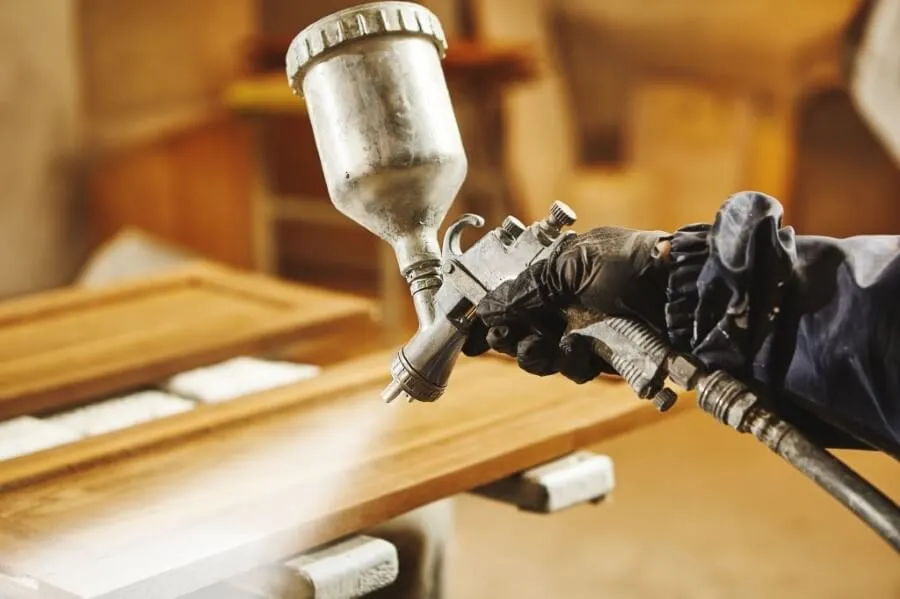
The Pros and Cons of Spray Painting Wood
While spray painting wood is a fantastic option for many DIY projects, it’s important to weigh the pros and cons before committing to the task. In this section, we’ll dive deeper into the advantages and disadvantages of using spray paint on wood, especially when you ask yourself, Can spray paint work on wood?
The Benefits of Spray Painting Wood
- Speed and Convenience
One of the biggest advantages of spray painting wood is its speed. When asking, Can spray paint be used on wood? you’ll find that spray paint allows you to cover large areas quickly, making it an ideal choice for big projects like doors, trim, or large furniture pieces. Compared to traditional brush painting, spray paint dries faster and can be applied in thin layers, meaning you can move from one coat to the next in less time. - Even Coverage
Unlike traditional brushes or rollers that can leave streaks or brush marks, spray painting wood delivers a consistent, even finish. This can be especially important if you’re working with intricate wood designs or pieces that have multiple surfaces. The fine mist of spray paint evenly coats every corner, ensuring that even hard-to-reach areas are covered with ease. - No Brush Strokes
One of the most common questions when it comes to painting wood is, Can you apply spray paint to wood without seeing brush strokes? Absolutely. Spray paint allows you to achieve a smooth, flawless finish free of brush strokes, which is a common problem when using traditional paintbrushes. - Variety of Finishes
When considering whether Is spray paint suitable for wood? it’s important to note that spray paint comes in many finishes, including glossy, satin, matte, and even textured options. Whether you’re looking to create a modern glossy finish or a more rustic matte look, spray paint gives you the flexibility to achieve the aesthetic you’re after.
The Drawbacks of Spray Painting Wood
- Prep Work is Essential
Although spray painting is relatively quick, it’s crucial to prep the wood surface properly before starting. Skipping steps like sanding or cleaning the wood can result in poor paint adhesion and an uneven finish. So, before you ask, Can spray paint be used on wood without prep? understand that sanding, cleaning, and priming are essential steps for achieving the best possible outcome. - Risk of Drips and Runs
One downside of spray painting is the potential for drips or runs, especially when too much paint is applied at once. This is especially true if you’re working on vertical wood surfaces or detailed pieces. To avoid this, it’s essential to apply thin, even coats of paint and wait for each layer to dry before applying the next. - Ventilation Concerns
Spray paint fumes can be toxic, so it’s essential to work in a well-ventilated area. If you’re working indoors, ensure the space is adequately ventilated by opening windows or using fans to circulate the air. Working outdoors is ideal for reducing exposure to fumes, so if you’re asking Can you spray paint wood indoors? be sure to take safety precautions to protect your health.
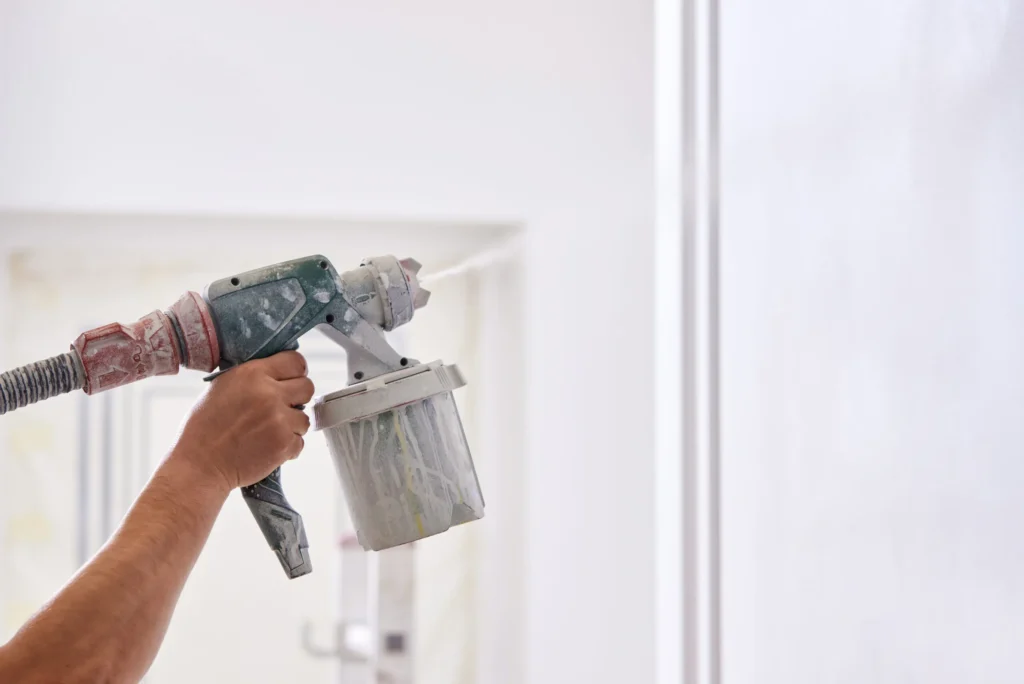
How to Spray Paint Wood Like a Pro
When it comes to spray painting wood, knowing the right techniques is crucial. Here’s a step-by-step guide that answers the question, Can you spray paint wood? and helps you achieve professional-quality results.
Step 1: Choose the Right Spray Paint
The first step when asking Can you spray paint wood? is to choose the right spray paint for your project. It’s important to use spray paint that is specifically designed for wood surfaces to ensure that the paint adheres properly and lasts for years. Look for paints labeled “for wood” or “multi-surface” to get the best results. There are various types of finishes available, so pick the one that fits your desired look — whether it’s glossy, satin, or matte.
Step 2: Prep the Wood Surface
One of the most important parts of the process is preparing the wood surface. To ensure the best results, sand the wood to create a smooth, even base. If there are any rough patches, sanding them down will prevent the paint from clumping in certain areas. Once you’ve sanded the surface, wipe it down with a damp cloth to remove dust and debris. If the wood is porous or stained, consider applying a primer to help the paint adhere more effectively.
Step 3: Apply the Paint
When asking Can wood be spray-painted? remember to apply the paint in thin, even layers. Hold the spray paint can about 8–12 inches away from the surface and apply the paint in light, sweeping motions. This will help avoid drips and create a smooth, consistent coat. Wait for each layer to dry before applying the next one to build up the color and coverage.
Step 4: Drying and Curing
After you’ve applied the final coat of spray paint, be patient and let the paint cure completely. While the paint may feel dry to the touch within a few minutes, it takes several hours for it to fully harden and cure. Touching or moving the painted wood too soon could result in smudges or fingerprints.
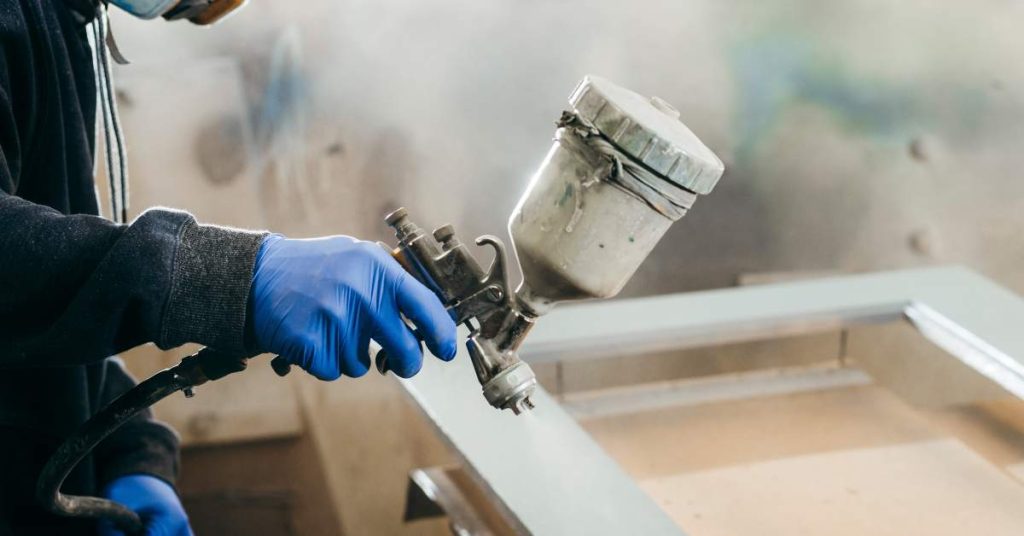
Common Mistakes to Avoid When Spray Painting Wood
While spray painting wood is relatively simple, there are common mistakes that can lead to less-than-ideal results. Here are some things to avoid:
Over-Spraying
When asking, Can wood be spray-painted evenly? you may run into issues if you over-spray. Apply thin layers to avoid drips and runs. If you’re working on a larger project, consider applying the paint in multiple coats rather than one heavy layer.
Using the Wrong Paint or Primer
Ensure that you use spray paint that’s formulated for wood surfaces. Paints not specifically designed for wood may not adhere well, leading to peeling or chipping over time.
Skipping Prep Work
Never underestimate the importance of preparation. Skipping sanding, cleaning, and priming can result in poor paint adhesion and a bumpy finish. Make sure you take the time to prep the surface correctly before you start painting.
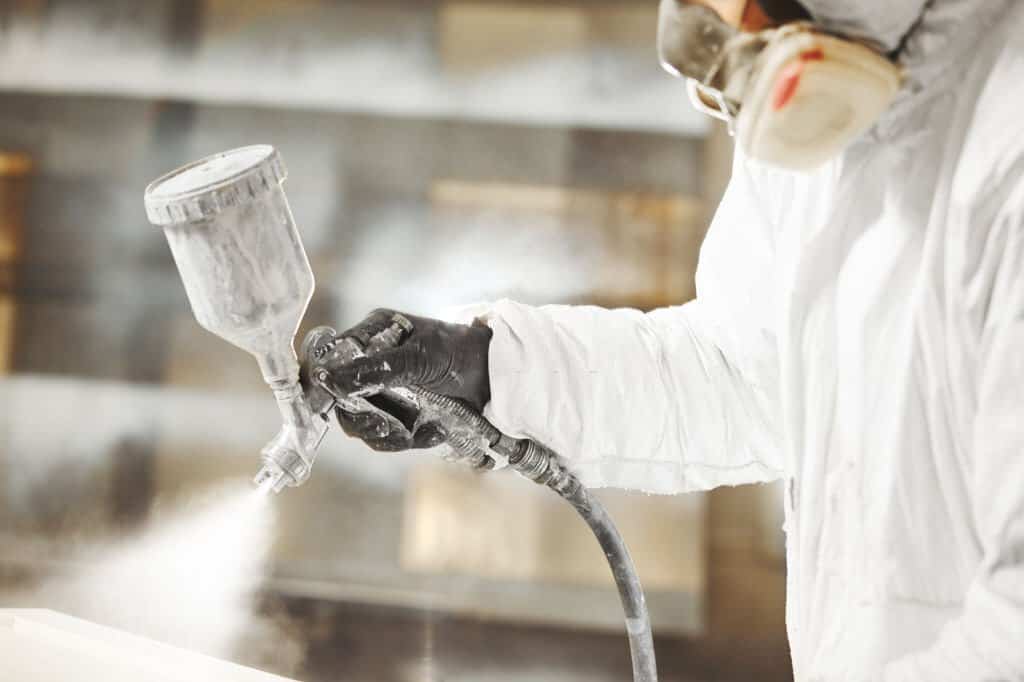
Can You Spray Paint Outdoor Wood? Tips for Durability
Yes, spray painting outdoor wood is not only possible but highly recommended for projects like garden furniture, decks, and fences. However, outdoor wood requires extra attention to ensure the paint can withstand the elements. Be sure to use weather-resistant spray paints that are designed for exterior use. These paints are formulated to resist fading, cracking, and peeling due to sun exposure, rain, and temperature fluctuations.
Additionally, consider applying a clear outdoor sealer or topcoat to protect your project and ensure its longevity. Ask yourself, Can spray paint be used on wood for outdoor projects? The answer is yes, as long as the right materials are used and proper care is taken.
Conclusion: Ready to Spray Paint Your Wood Project?
In conclusion, Can you spray paint wood? Absolutely. With the right preparation, tools, and techniques, you can transform any wooden surface into a beautiful and durable piece. Whether you’re working on indoor furniture, outdoor decor, or a simple DIY project, spray painting wood can help you achieve a flawless finish. Follow the tips outlined in this guide, and you’ll be ready to tackle your next spray paint project with confidence!